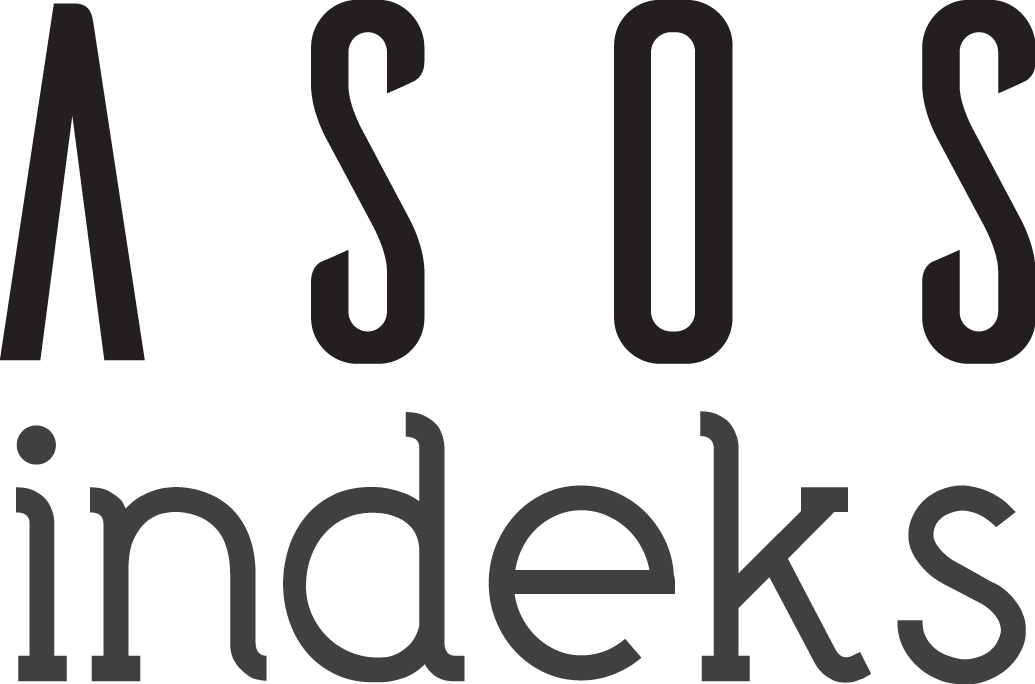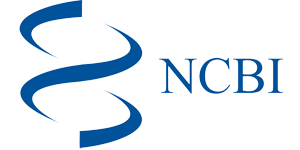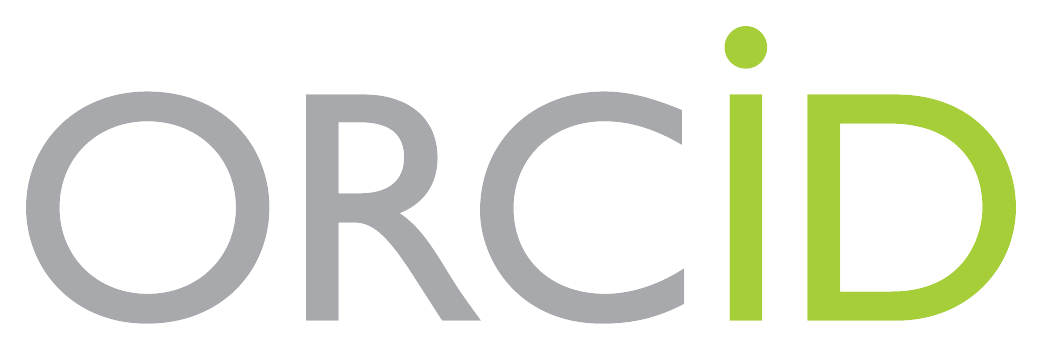Haglund deformitesine ilişkin çevrimiçi bilgilerin kalitesi ve okunabilirliğinin değerlendirilmesi: kapsamlı bir analiz
Abstract
ÖZET
Amaç: Bu çalışmanın amacı Haglund deformitesi ile ilgili çevrimiçi bilgilerin kalitesini, güvenilirliğini ve okunabilirliğini değerlendirmektir.
Yöntemler: En popüler üç tarayıcı seçildi ve iki değerlendirici web sitelerini türlerine göre kategorize etti. Her sitenin kalitesi HONcode'a uygunluğuna göre değerlendirildi ve DISCERN, JAMA benchmark ve GQS gibi puanlama araçları kullanılarak değerlendirildi. Web sitelerinin okunabilirliğini değerlendirmek için Flesch-Kincaid Grade Level (FKGL) skoru kullanılmıştır.
Sonuçlar: Akademik web sayfaları DISCERN, JAMA, GQS ve HCS'de diğer alt kategorilere kıyasla belirgin şekilde üstün puanlar sergilemiştir (p<0.05). HON koduna sahip web siteleri de FKGL ve FKRS hariç diğer metriklerde daha yüksek puanlar göstermiştir. Bununla birlikte, okunabilirlik puanları, içeriğin çoğunun genel halk için önerilen anlama seviyesinin üzerinde olduğunu göstermiştir. DISCERN ve JAMA puanları arasında güçlü bir pozitif korelasyon gözlenirken (r=0.935; p<0.05), FKRS ve HCS puanları arasında negatif bir korelasyon kaydedilmiştir (r=-0.723; p<0.05).
Sonuçlar: Bu çalışma, Haglund deformitesine ilişkin çevrimiçi bilgilerin kalitesi ve erişilebilirliği konusunda önemli değişkenlikler olduğunu vurgulamaktadır. Akademik kaynaklar daha yüksek kalitede bilgi sunarken, karmaşıklıkları halkın anlayışını sınırlayabilir. Bu bulgular, hasta eğitimini geliştirmek ve bilinçli karar vermeyi desteklemek için erişilebilir, yüksek kaliteli çevrimiçi kaynaklara duyulan ihtiyacı vurgulamaktadır.
Keywords
References
- Yüce A, Yerli M, Misir A, Çakar M. Enhancing patient information texts in orthopaedics: how OpenAI's 'ChatGPT' can help. J Exp Orthop. 2024; 11(3):e70019. doi:10.1002/jeo2.70019
- Brunnekreef JJ, Schreurs BW. Total hip arthroplasty: what information do we offer patients on websites of hospitals? BMC Health Serv Res. 2011; 11(1):83. doi:10.1186/1472-6963-11-83
- Hungerford DS. Internet access produces misinformed patients: managing the confusion. Orthopedics. 2009;32(9):658-660. doi:10.3928/ 01477447-20090728-04
- Gunduz ME, Matis GK, Ozduran E, Hanci V. Evaluating the readability, quality, and reliability of online patient education materials on spinal cord stimulation. Turk Neurosurg. 2024;34(4):588-599. doi:10.5137/1019-5149.JTN.42973-22.3
- Şahin AA, Boz M, Keçeci T, Ünal A, Çıraklı A. Readability and quality levels of websites that contain written information about anterior cruciate ligament injury: a survey of Turkish websites. Acta Orthop Traumatol Turc. 2022;56(2):88-93. doi:10.5152/j.aott.2022.21142
- Vaishya R, Agarwal AK, Azizi AT, Vijay V. Haglund's syndrome: a commonly seen mysterious condition. Cureus. 2016;8(10):e820. doi:10. 7759/cureus.820
- Scholten PE, van Dijk CN. Endoscopic calcaneoplasty. Foot Ankle Clin. 2006;11(2):439-viii. doi:10.1016/j.fcl.2006.02.004
- Wu Z, Hua Y, Li Y, Chen S. Endoscopic treatment of Haglund's syndrome with a three portal technique. Int Orthop. 2012;36(8):1623-1627. doi:10.1007/s00264-012-1518-5
- Leitze Z, Sella EJ, Aversa JM. Endoscopic decompression of the retrocalcaneal space. J Bone Joint Surg Am. 2003;85(8):1488-1496. doi: 10.2106/00004623-200308000- 00009
- Plus M. How to write easy-to-read health materials 2013. Available at: http://www. nlm.nih.gov/medlineplus/etr.html. Accessed November 1, 2019.
- Key S, Yalın M, Erten M. Growing taller without hormones? Dr. Consult Google-an evaluation of online information related to limb lengthening. Healthcare (Basel). 2023;11(2):172. doi:10.3390/healthcare11020172
- Golgelioglu F, Canbaz SB. From quality to clarity: evaluating the effectiveness of online ınformation related to septic arthritis. J Orthop Surg Res. 2023;18(1):689. doi:10.1186/s13018-023-04181-x
- Market share for mobile, browsers, operating systems and search engines | NetMarketShare [Internet]. Market share for mobile, browsers, operating systems and search engines | NetMarketShare. Available from: https://netmarketshare.com
- DISCERN- Welcome to DISCERN [Internet]. DISCERN- Welcome to DISCERN. Available from: http://www.discern.org.uk/.
- Cassidy JT, Baker JF. Orthopaedic patient information on the World Wide Web: an essential review. J Bone Joint Surg Am. 2016;98(4):325-338. doi:10.2106/JBJS.N.01189
- Bernard A, Langille M, Hughes S, Rose C, Leddin D, Veldhuyzen van Zanten S. A systematic review of patient inflammatory bowel disease information resources on the World Wide Web. Am J Gastroenterol. 2007;102(9):2070-2077. doi:10.1111/j.1572- 0241.2007.01325.x
- Agar A, Sahin A. Kyphosis-related information on the internet is the quality, content and readability sufficient for the patients? Global Spine J. 2022;12(3):476-482. doi:10.1177/21925682211015955
- Yalın M, Key S. Is the internet sufficient and trustworthy for torticollis parents? Evaluation of online information for torticollis. Med J Bakirkoy. 2024;20(1):85-91. doi:10.4274/BMJ.galenos.2023.2022.12-1
- Boyer C, Selby M, Appel RD. The health on the net code of conduct for medical and health web sites. Stud Health Technol Inform. 1998;52(Pt 2):1163-1166. doi:10.1016/S0010-4825(98)00037-7
- Lim ST, Kelly M, O'Neill S, D'Souza L. Assessing the quality and readability of online resources for plantar fasciitis. J Foot Ankle Surg. 2021;60(6):1175-1178. doi:10.1053/j.jfas.2021.02.014
- Schwarz GM, Lisy M, Hajdu S, Windhager R, Willegger M. Quality and readability of online resources on chronic ankle instability. Foot Ankle Surg. 2022;28(3):384-389. doi:10.1016/j.fas.2021.05.003
- Ghodasra JH, Wang D, Jayakar RG, et al. The assessment of quality, accuracy, and readability of online educational resources for platelet-rich plasma. Arthroscopy. 2018;34(1):272-278. doi:10.1016/j.arthro.2017. 06.023
- Hartnett DA, Philips AP, Daniels AH, Blankenhorn BD. Readability and quality of online information on total ankle arthroplasty. Foot (Edinb). 2023;54:101985. doi:10.1016/j.foot.2023.101985
- Nason GJ, Baker JF, Byrne DP, Noel J, Moore D, Kiely PJ. Scoliosis-specific information on the internet: has the "information highway" led to better information provision? Spine (Phila Pa 1976). 2012;37(21):E1364-E1369. doi:10.1097/BRS.0b013e31826619b5
- O'Neill SC, Baker JF, Fitzgerald C, et al. Cauda equina syndrome: assessing the readability and quality of patient information on the internet. Spine (Phila Pa 1976). 2014;39(10):E645-E649. doi:10.1097/BRS.0000000000000282
- Goldenberg BT, Schairer WW, Dekker TJ, Lacheta L, Millett PJ. Online resources for rotator cuff repair: what are patients reading? Arthrosc Sports Med Rehabil. 2019;1(1):e85-e92. doi:10.1016/j.asmr.2019.06.002
- Weiss BD. Health literacy and patient safety: help patients understand, 2007.
- Cassidy JT, Baker JF. Orthopaedic patient information on the World Wide Web: an essential review. J Bone Joint Surg Am. 2016;98(4):325-338. doi:10.2106/JBJS.N.01189
- Irwin SC, Lennon DT, Stanley CP, Sheridan GA, Walsh JC. Ankle conFUSION: the quality and readability of information on the internet relating to ankle arthrodesis. Surgeon. 2021;19(6):e507-e511. doi:10.1016/ j.surge.2020.12.001
- Plusch K, Carfagno J, Givner D, et al. An evaluation of the source and content of dupuytren's disease information available on the internet. Cureus. 2021;13(11):e19356. doi:10.7759/cureus.19356
- Wang D, Jayakar RG, Leong NL, Leathers MP, Williams RJ, Jones KJ. Evaluation of the quality, accuracy, and readability of online patient resources for the management of articular cartilage defects. Cartilage. 2017;8(2):112-118. doi:10.1177/1947603516648737
- Kaya E, Görmez S. Quality and readability of online information on plantar fasciitis and calcaneal spur. Rheumatol Int. 2022 ;42(11):1965-1972. doi:10.1007/s00296-022-05165-6
The digital dilemma of Haglund deformity: assessing online information's reliability and readability-a cross-sectional study
Abstract
ABSTRACT
Aims: This study aimed to evaluate the quality, reliability, and readability of online information on Haglund deformity.
Methods: The three most popular browsers were selected, and two reviewers categorized the websites by type. The quality of each site was assessed based on its adherence to the HONcode and evaluated using scoring instruments like the DISCERN, JAMA benchmark, and GQS. The Flesch-Kincaid grade level (FKGL) score was utilized to evaluate the readability of the websites.
Results: Academic webpages exhibited markedly superior ratings in DISCERN, JAMA, GQS, and HCS compared to other subcategories (p<0.05). Websites with a HON code also demonstrated higher scores across most metrics, except for FKGL and FKRS. However, readability scores indicated that much of the content was above the recommended comprehension level for the general public. A strong positive correlation was observed between DISCERN and JAMA scores (r=0.935; p<0.05), while a negative correlation was noted between FKRS and HCS scores (r=-0.723; p<0.05).
Conclusion: The study highlights significant variability in the quality and accessibility of online information on Haglund deformity. While academic sources offer higher-quality information, their complexity may limit public understanding. These findings emphasize the need for accessible, high-quality online resources to enhance patient education and support informed decision-making.
Keywords
Ethical Statement
This article does not contain any studies with human participants or animals performed by any of the authors.
References
- Yüce A, Yerli M, Misir A, Çakar M. Enhancing patient information texts in orthopaedics: how OpenAI's 'ChatGPT' can help. J Exp Orthop. 2024; 11(3):e70019. doi:10.1002/jeo2.70019
- Brunnekreef JJ, Schreurs BW. Total hip arthroplasty: what information do we offer patients on websites of hospitals? BMC Health Serv Res. 2011; 11(1):83. doi:10.1186/1472-6963-11-83
- Hungerford DS. Internet access produces misinformed patients: managing the confusion. Orthopedics. 2009;32(9):658-660. doi:10.3928/ 01477447-20090728-04
- Gunduz ME, Matis GK, Ozduran E, Hanci V. Evaluating the readability, quality, and reliability of online patient education materials on spinal cord stimulation. Turk Neurosurg. 2024;34(4):588-599. doi:10.5137/1019-5149.JTN.42973-22.3
- Şahin AA, Boz M, Keçeci T, Ünal A, Çıraklı A. Readability and quality levels of websites that contain written information about anterior cruciate ligament injury: a survey of Turkish websites. Acta Orthop Traumatol Turc. 2022;56(2):88-93. doi:10.5152/j.aott.2022.21142
- Vaishya R, Agarwal AK, Azizi AT, Vijay V. Haglund's syndrome: a commonly seen mysterious condition. Cureus. 2016;8(10):e820. doi:10. 7759/cureus.820
- Scholten PE, van Dijk CN. Endoscopic calcaneoplasty. Foot Ankle Clin. 2006;11(2):439-viii. doi:10.1016/j.fcl.2006.02.004
- Wu Z, Hua Y, Li Y, Chen S. Endoscopic treatment of Haglund's syndrome with a three portal technique. Int Orthop. 2012;36(8):1623-1627. doi:10.1007/s00264-012-1518-5
- Leitze Z, Sella EJ, Aversa JM. Endoscopic decompression of the retrocalcaneal space. J Bone Joint Surg Am. 2003;85(8):1488-1496. doi: 10.2106/00004623-200308000- 00009
- Plus M. How to write easy-to-read health materials 2013. Available at: http://www. nlm.nih.gov/medlineplus/etr.html. Accessed November 1, 2019.
- Key S, Yalın M, Erten M. Growing taller without hormones? Dr. Consult Google-an evaluation of online information related to limb lengthening. Healthcare (Basel). 2023;11(2):172. doi:10.3390/healthcare11020172
- Golgelioglu F, Canbaz SB. From quality to clarity: evaluating the effectiveness of online ınformation related to septic arthritis. J Orthop Surg Res. 2023;18(1):689. doi:10.1186/s13018-023-04181-x
- Market share for mobile, browsers, operating systems and search engines | NetMarketShare [Internet]. Market share for mobile, browsers, operating systems and search engines | NetMarketShare. Available from: https://netmarketshare.com
- DISCERN- Welcome to DISCERN [Internet]. DISCERN- Welcome to DISCERN. Available from: http://www.discern.org.uk/.
- Cassidy JT, Baker JF. Orthopaedic patient information on the World Wide Web: an essential review. J Bone Joint Surg Am. 2016;98(4):325-338. doi:10.2106/JBJS.N.01189
- Bernard A, Langille M, Hughes S, Rose C, Leddin D, Veldhuyzen van Zanten S. A systematic review of patient inflammatory bowel disease information resources on the World Wide Web. Am J Gastroenterol. 2007;102(9):2070-2077. doi:10.1111/j.1572- 0241.2007.01325.x
- Agar A, Sahin A. Kyphosis-related information on the internet is the quality, content and readability sufficient for the patients? Global Spine J. 2022;12(3):476-482. doi:10.1177/21925682211015955
- Yalın M, Key S. Is the internet sufficient and trustworthy for torticollis parents? Evaluation of online information for torticollis. Med J Bakirkoy. 2024;20(1):85-91. doi:10.4274/BMJ.galenos.2023.2022.12-1
- Boyer C, Selby M, Appel RD. The health on the net code of conduct for medical and health web sites. Stud Health Technol Inform. 1998;52(Pt 2):1163-1166. doi:10.1016/S0010-4825(98)00037-7
- Lim ST, Kelly M, O'Neill S, D'Souza L. Assessing the quality and readability of online resources for plantar fasciitis. J Foot Ankle Surg. 2021;60(6):1175-1178. doi:10.1053/j.jfas.2021.02.014
- Schwarz GM, Lisy M, Hajdu S, Windhager R, Willegger M. Quality and readability of online resources on chronic ankle instability. Foot Ankle Surg. 2022;28(3):384-389. doi:10.1016/j.fas.2021.05.003
- Ghodasra JH, Wang D, Jayakar RG, et al. The assessment of quality, accuracy, and readability of online educational resources for platelet-rich plasma. Arthroscopy. 2018;34(1):272-278. doi:10.1016/j.arthro.2017. 06.023
- Hartnett DA, Philips AP, Daniels AH, Blankenhorn BD. Readability and quality of online information on total ankle arthroplasty. Foot (Edinb). 2023;54:101985. doi:10.1016/j.foot.2023.101985
- Nason GJ, Baker JF, Byrne DP, Noel J, Moore D, Kiely PJ. Scoliosis-specific information on the internet: has the "information highway" led to better information provision? Spine (Phila Pa 1976). 2012;37(21):E1364-E1369. doi:10.1097/BRS.0b013e31826619b5
- O'Neill SC, Baker JF, Fitzgerald C, et al. Cauda equina syndrome: assessing the readability and quality of patient information on the internet. Spine (Phila Pa 1976). 2014;39(10):E645-E649. doi:10.1097/BRS.0000000000000282
- Goldenberg BT, Schairer WW, Dekker TJ, Lacheta L, Millett PJ. Online resources for rotator cuff repair: what are patients reading? Arthrosc Sports Med Rehabil. 2019;1(1):e85-e92. doi:10.1016/j.asmr.2019.06.002
- Weiss BD. Health literacy and patient safety: help patients understand, 2007.
- Cassidy JT, Baker JF. Orthopaedic patient information on the World Wide Web: an essential review. J Bone Joint Surg Am. 2016;98(4):325-338. doi:10.2106/JBJS.N.01189
- Irwin SC, Lennon DT, Stanley CP, Sheridan GA, Walsh JC. Ankle conFUSION: the quality and readability of information on the internet relating to ankle arthrodesis. Surgeon. 2021;19(6):e507-e511. doi:10.1016/ j.surge.2020.12.001
- Plusch K, Carfagno J, Givner D, et al. An evaluation of the source and content of dupuytren's disease information available on the internet. Cureus. 2021;13(11):e19356. doi:10.7759/cureus.19356
- Wang D, Jayakar RG, Leong NL, Leathers MP, Williams RJ, Jones KJ. Evaluation of the quality, accuracy, and readability of online patient resources for the management of articular cartilage defects. Cartilage. 2017;8(2):112-118. doi:10.1177/1947603516648737
- Kaya E, Görmez S. Quality and readability of online information on plantar fasciitis and calcaneal spur. Rheumatol Int. 2022 ;42(11):1965-1972. doi:10.1007/s00296-022-05165-6
Details
| Primary Language | English |
|---|---|
| Subjects | Health Informatics and Information Systems |
| Journal Section | Research Articles [en] Araştırma Makaleleri [tr] |
| Authors | |
| Publication Date | February 14, 2025 |
| Submission Date | November 12, 2024 |
| Acceptance Date | December 25, 2024 |
| Published in Issue | Year 2025 Volume: 6 Issue: 1 |
TR DİZİN ULAKBİM and International Indexes (1d)
Interuniversity Board (UAK) Equivalency: Article published in Ulakbim TR Index journal [10 POINTS], and Article published in other (excuding 1a, b, c) international indexed journal (1d) [5 POINTS]
|
| ||
|
|
|
Our journal is in TR-Dizin, DRJI (Directory of Research Journals Indexing, General Impact Factor, Google Scholar, Researchgate, CrossRef (DOI), ROAD, ASOS Index, Turk Medline Index, Eurasian Scientific Journal Index (ESJI), and Turkiye Citation Index.
EBSCO, DOAJ, OAJI and ProQuest Index are in process of evaluation.
Journal articles are evaluated as "Double-Blind Peer Review".













